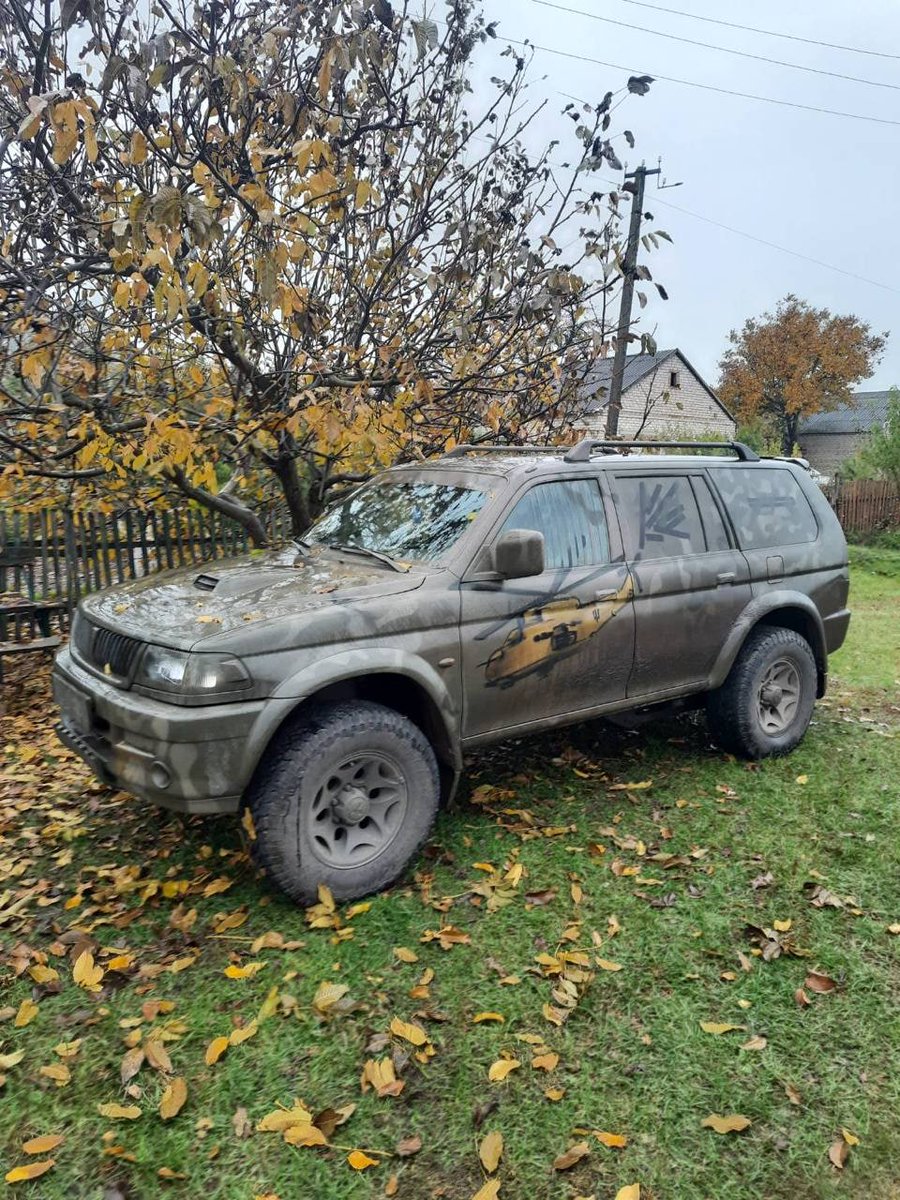And here goes the new round of donations for the Ukrainian army. Thanks to everyone who has donated last time! Here's one piece of equipment paid for by your money: a vehicle for the 58th brigade. Today I'll post some more donation links🧵 

1. Communications equipment for the 1st (Bogun) Brigade. Radio batteries, antennas, etc
Wire
IBAN: UA403220010000026204329575932
Swift: UNJSUAUKXXX
Account: 26204329575932
Receiver: PARFONOV HLIB
Bank: JSC UNIVERSAL BANK
City: KYIV, UKRAINE
PayPal
gleb.parfenov95@gmail.com
Wire
IBAN: UA403220010000026204329575932
Swift: UNJSUAUKXXX
Account: 26204329575932
Receiver: PARFONOV HLIB
Bank: JSC UNIVERSAL BANK
City: KYIV, UKRAINE
PayPal
gleb.parfenov95@gmail.com
(continuation)
Crypto links for the communications equipment
BTC bc1qsksu2x0lnqs09yv3qtsdlxgxjsmqecdqrmjhvy
ETH 0x08447D07152d7E2d566ecD7462dC862262850636
Crypto links for the communications equipment
BTC bc1qsksu2x0lnqs09yv3qtsdlxgxjsmqecdqrmjhvy
ETH 0x08447D07152d7E2d566ecD7462dC862262850636
2. The orcbusters fund is crowdfunding for the 1-ASU Valkiriya drones used for adjusting the artillery fire, vehicles, winter clothes for soldiers, etc. You can find wire transfer, card payment, crypto etc. donation details on their website
orcbusters.com/#campaigns
orcbusters.com/#campaigns
3. Chechen Sheikh Mansur Battalion is crowdfunding for a drone. Currently they are approximately 3250 usd short. These are pro-Ichkeriya and anti-Kadyrov Chechens fighting on the Ukrainian side in this war
send.monobank.ua/jar/PWiDoqtss
send.monobank.ua/jar/PWiDoqtss
4. Dutch-located "Zeilen van Vrijheid" fund buying ambulance cars and medical kits for Ukraine zeilenvanvrijheid.nl Unlike many others they have "US bank transfer to tax-deductible 501(c)(3) charity" links both for individuals and corporations as well as PayPal, GoFundme, etc
5. Shevchenko University students are crowdfunding for a UAV for Cherkassy territorial defense
Bank: PrivatBank
City: KYIV, UKRAINE
Receiver: Vladyslav Murachov
IBAN: UA373052990262006400935722120
Account: 262006400935722120
Paypal: mvladchua@gmail.com
send.monobank.ua/jar/3NEj9iMEuv
Bank: PrivatBank
City: KYIV, UKRAINE
Receiver: Vladyslav Murachov
IBAN: UA373052990262006400935722120
Account: 262006400935722120
Paypal: mvladchua@gmail.com
send.monobank.ua/jar/3NEj9iMEuv
6. A fund helping the territorial defense in Sumy region. Drones, border observation, medical kits and other equipment
fond.sumy.ua/#Donate-section
fond.sumy.ua/#Donate-section
7. Lubart special operations unit is crowdfunding for a drone:
send.monobank.ua/jar/32Lmt5ugaJ
Company name: Charity Fund Lubart
Identification code: 444703899
IBAN: UA493052990000026003020810861
Bank: JSC CB "PRIVATBANK"
BTC:
bc1qhvy2gsj055fwawya4a4zz6j0qguxdkmn3hp40c
send.monobank.ua/jar/32Lmt5ugaJ
Company name: Charity Fund Lubart
Identification code: 444703899
IBAN: UA493052990000026003020810861
Bank: JSC CB "PRIVATBANK"
BTC:
bc1qhvy2gsj055fwawya4a4zz6j0qguxdkmn3hp40c
8. Donations for the 47th assault regiment. Wire transfer, PayPal, crypto transfer details
markusfoundation.com/rekvizyty-blah…
markusfoundation.com/rekvizyty-blah…
9. Lviv defence cluster
CHARITY FUND «ASSISTANCE TO LVIV DEFENCE CLUSTER
USREOU code: 44788003
Location: Ukraine, 79019, Lviv, Zhovkivska str, 22
BANK: JSC CB PRIVATBANK
IBAN USD: UA553052990000026000031023015
IBAN EUR: UA083052990000026002041029052
SWIFT: PBANUA2X
CHARITY FUND «ASSISTANCE TO LVIV DEFENCE CLUSTER
USREOU code: 44788003
Location: Ukraine, 79019, Lviv, Zhovkivska str, 22
BANK: JSC CB PRIVATBANK
IBAN USD: UA553052990000026000031023015
IBAN EUR: UA083052990000026002041029052
SWIFT: PBANUA2X
10. A volunteer "Dyka Poshta "fund buying miscellaneous for the troops: from provisions to the anti drone guns
dykaposhta.org/donate/
dykaposhta.org/donate/
11. Fund "Come back alive" savelife.in.ua/en/donate-en/#… a large fund specialised on providing the troops with everything necessary. They accept wire transfers, payments by card and crypto donations
• • •
Missing some Tweet in this thread? You can try to
force a refresh





